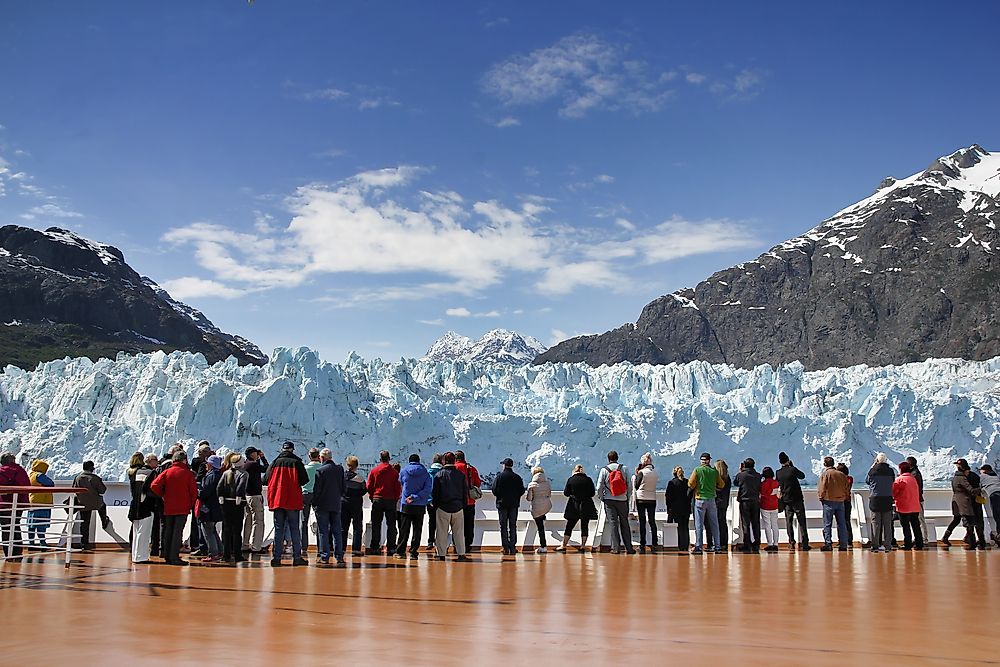What Are The Biggest Industries In Alaska?

Alaska is one of the US states lying in the extreme northwest part of the country just across the Bering Strait from Asia. The State of Alaska borders the Canadian territory of Yukon and the province of British Columbia on the south-eastern and eastern part of the state. The most extreme western part of Alaska is Attu Island sharing its maritime border with Russia which lies across the west of the Bering Strait.
Alaska is the largest state in the country regarding the land area, and it is the seventh-largest sub-national division in the whole world. The state is also the third least populous and the most sparsely populated state in the whole country. As of 2015, Alaska had a population of 738,432 people, and about half of the inhabitants reside within the metropolitan area of Anchorage. The economy of Alaska is dominated by natural gas, fishing, and oil industries, among others. The US armed forces have bases in Alaska and tourism account for a larger part of the economy of Alaska.
Agriculture
Farming in the state is not as widespread as other states because of its steep terrain and northern climate. Farming is carried out mainly in the Matanuska valley which lies about 40 miles to the North East of the Anchorage City, and the Kenai Peninsula which lies about 60 miles to the southwest of the city of Anchorage. Alaska experiences a short growing season of only 100 days, and as a result, it limits the variety of crops that can be grown. However, the long sunny summer days make it the most productive growing season. Some of the crops cultivated in Alaska include cabbage, lettuce, carrots, and potatoes, among others. Hunting of animals like caribou, Dall sheep, and moose is widely practiced for subsistence, particularly among the remote communities. One of the native foods is Akutaq, which is an Eskimo ice cream consisting of reindeer fat, dried fish, seal oil, and local berries. Herding of reindeer is carried out in the seaward peninsula where wild caribou cannot mix or mingle when migrating with the domesticated reindeer. Most foods in Alaska, particularly in the cities, are relatively expensive because they are imported. Shipping costs put their prices slightly higher compared to other cities in the US.
Fishing
Alaska is the only state in the US that borders three oceans, which include the Bering Sea, Pacific Ocean, and the Arctic Sea. Alaska has a coastline totaling about 34,000 miles when all the islands are taken into consideration. Alaska is also home to about 3 million lakes and more than 3,000 rivers. The state of Alaska harvested 5.35 billion pounds of shellfish and fish in 2011. The industry is responsible for generating up to 60,000 jobs depending on the season. Alaska has huge stocks of seafood, and the leading fishing ground is in the Bering Sea and the northern Pacific. Seafood is one of the cheapest items in Alaska. Most residents of Alaska fish in the rivers particularly during the salmon season for subsistence or sport.
Mining
Mining is one of the leading industries in Alaska, and some of the leading minerals mined in the state include gold, copper, silver, lead, coal, and zinc, among others. The mining industry in 2010 generated 4,100 jobs involved directly in the production of an exploration of minerals. According to the Alaska Miners Association, jobs created indirectly such as construction and supplies increased the number of jobs to about 8,200 jobs generating personal incomes of about $565 million every year as of 2010. Gold mining in Alaska has a long history and has been one of the leading in the industry since the US acquired Alaska from Russia. Gold was discovered in 1848 by Russian explorers in Kenai River. The first gold mining began in 1870 in the southeast of Juneau. Gold is found in almost all regions of Alaska except in the swampy areas of the Yukon flats and between the Beaufort Sea and the Brooks Range.
Tourism
Tourism plays a significant role in the economy of Alaska, and it is the second-largest private-sector employer in the state responsible for 1/8 of jobs. Every year the tourism industry brings in about $1.8 billion, and it is responsible for creating more than 39,000 jobs. Most tourists or about half of all tourist arrivals in Alaska use cruise ships, and others use air through Ted Stevens Anchorage International Airport. Some of the tourist attractions in Alaska include wildlife, landscape, and culture, among others. Some of the activities that visitors enjoy in Alaska include whale watching, sightseeing, fishing, kayaking or rafting, ziplining, hiking, wildlife viewing, flightseeing, and glacier viewing. The leading tourist destinations in the state include Alaska’s National Park Systems. Every year, Alaska is visited by more than 26 million people contributing about $1.1 billion to the economy of the state.
Energy
Alaska is one of the largest oil producers in the US and currently ranks as the second-largest producer of crude oil. Vast oil and gas reserves are found in Cook Inlet basins and along the Alaska North Slope (ANS). The regions with oilfield yielding the highest output in the United States and the whole of North America are in Alaska’s North Slope and Prudhoe Bay. They are producing an average of 400,000 barrels of oil every day. The largest crude oil pipeline in the US is the Trans-Alaska pipeline that has the potential of pumping up to 2.1 million barrels in a single day. As of 2012, production of crude oil in Alaska accounted for 8.1% of the whole country’s oil production ranking third after Texas which produces about 30.6%, North Dakota producing about 10.2%, and California producing about 8.3%.











